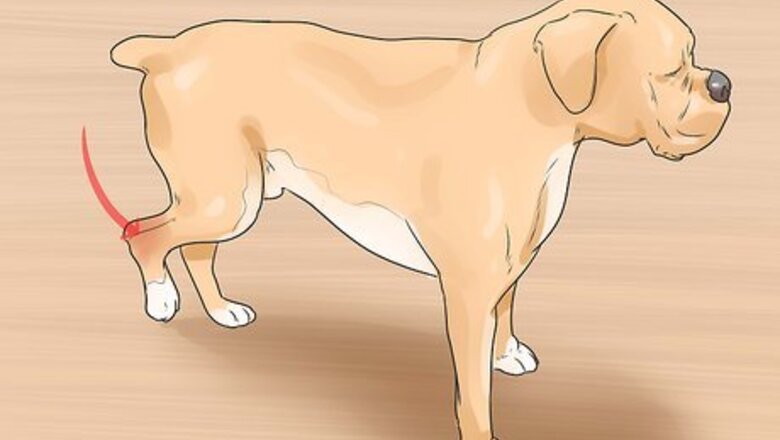
views
Administering First Aid

Recognize signs of a sprain. Before you administer any first aid to your dog, identify signs of a sprain, which are most common at the wrist and knee. This can help you figure if your dog needs to see your vet or there may be another issue. Signs of a sprain in your dog are: Limping Lameness, or inability to walk Swelling Pain or tenderness Limb deformity (not usually present with a sprain, but is common with fractures and dislocations)
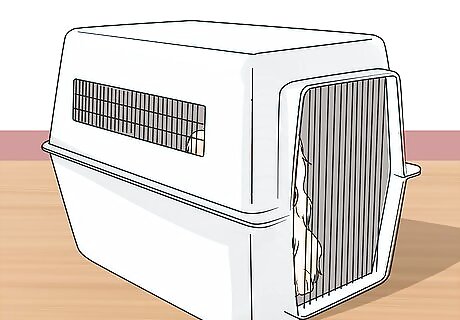
Restrict your dog's movement. As soon as you notice that your dog is in pain, do what you can to stop your dog from moving around too much. If your dog continues to run and play, then the injury may become worse. If your dog is crate trained, then you may want to put your dog into his crate for a while. If your dog is not crate trained, then you might want to put your dog on a leash to stop him from running around too much.
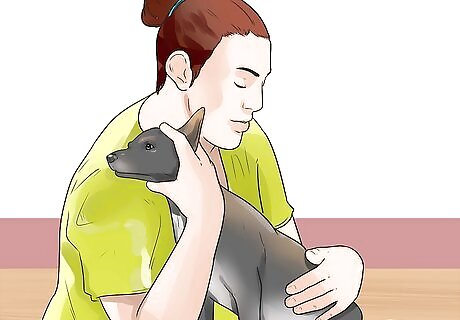
Examine your dog with care. No matter how gentle your pet is, if she is injured she may bite or hurt you. Animals that are in pain and scared can be dangerous. Keep your face away from your dog's mouth and don't attempt to hug her. Perform the examination slowly and gently. Reassure your dog in a soft voice and stop if she gets agitated.
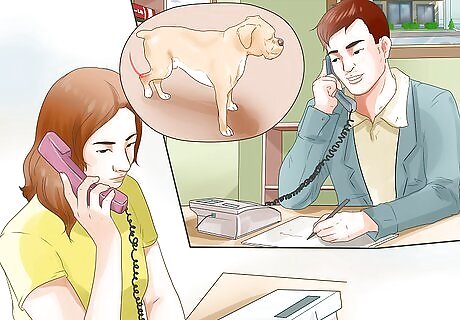
Call your vet. Once you've had a chance to examine your pet, call your vet's office and make an appointment. Explain the situation and get your dog an appointment as soon as possible. This can also alert them that you are coming. Call an emergency clinic if you can't reach your regular vet's office. Tell your vet about your dog's symptoms and ask any questions you have, including the best way to transport your dog.
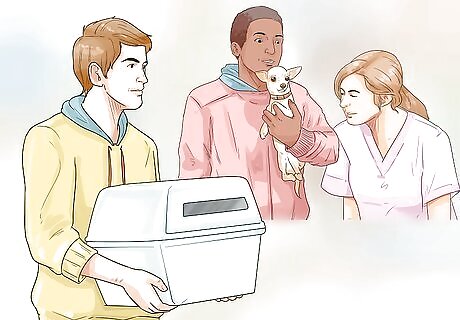
Transport your dog to the vet. The only effective way to treat your dog's sprain is by seeing her vet. Once you've examined her and informed your vet that you are coming, transport her to the office for treatment. Keep your dog in a carrier, crate, or sectioned off area of your car during transport. This can minimize the risk of your dog further injuring herself.
Getting Veterinary Treatment

Visit your dog's vet. Your vet can diagnose a sprain and make a treatment plan to help your dog heal. Remember that getting veterinary attention is the only way to ensure that your dog has a sprain and gets proper treatment. Tell your vet about your dog's symptoms, how the injury happened, and your dog's behavior since the injury. For example, you can say, “She's been limping and I'm not sure how the injury happened. She seems to be putting more weight on her right side and doesn't really get excited about going outside like she normally does.” If possible, ave a copy of your dog's medical records with you for the visit, though the vet should also have them on file. Answer any questions your vet may ask.
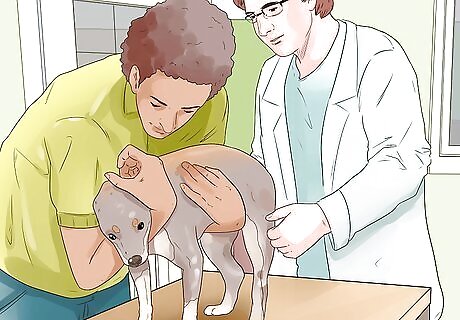
Allow the veterinarian to perform an examination and tests. Your doctor will do her own examination of your dog and may order further testing for her. The exam and tests can help your vet see exactly where the problem is and formulate the best treatment plan. Your vet may look over your dog and touch or press certain points to see if they're swollen, sore, warm, or out of place. Your vet may ask your dog to walk, sit, and lie down. You vet may take an X-ray or do a scan like an MRI or CT scan.
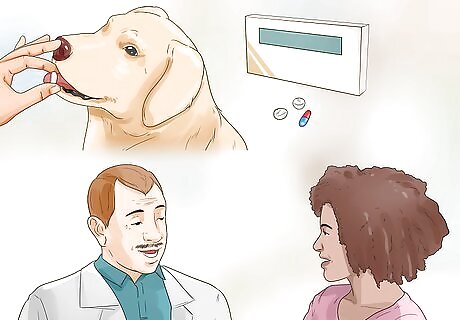
Ask about treatment options. Once your vet examines your dog and makes a diagnosis, she may suggest different treatments depending on the severity of the injury. Follow any instructions your vet gives you for your dog's treatment. Make sure to give her any medication prescribed. Your vet might suggest treatments such as: Giving your dog an NSAID (non-steroidal anti-inflammatory drug) for pain Using ice or heat packs Encouraging your dog to rest and take it slow Massaging the injured area
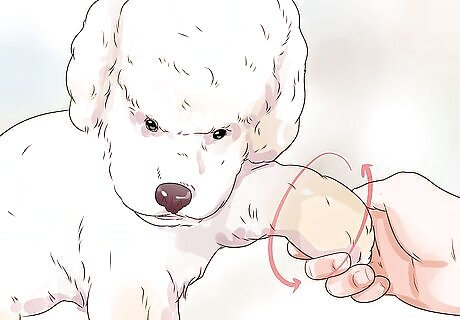
Consider physical therapy. Your dog may need physical therapy following her sprain to improve her mobility and promote healing. Take her to a certified canine physical therapist and follow up with any homework exercises she suggests for your dog. The number of sessions your dog needs depends on the severity of the injury. Sessions usually run from 30 minutes to one hour and are meant to be pain-free. Most patients will have “homework.” For example, your dog's therapist might recommend placing your dog on an exercise ball and gently rocking her forward to increase her range of motion.
Caring for Your Dog and Her Injury

Rest your dog. Give your dog a chance to rest while she is injured. This will promote healing and reduce pain or discomfort. Walk her on a leash for two to four weeks after the injury or for the period your doctor recommends. Pay attention to your dog's behavior. If she seems tired, take her back home by walking slowly or picking her up.

Apply ice to the injury. Place an ice pack on your dog's injury if it is swollen or appears to cause pain. The ice may decrease inflammation and pain and help the leg heal. Use ice for 15 to 20 minutes at a time several times a day. Wrap the ice pack in a towel to protect your dog's skin from the cold. Examine her skin for white or firm patches, which can indicate the pack is too cold.
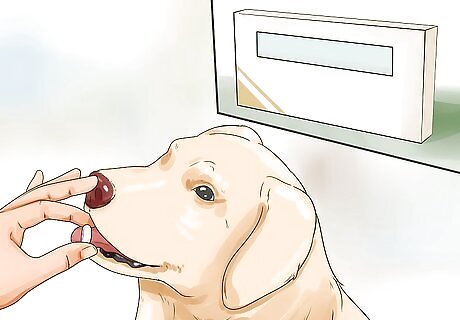
Give her pain medication. Your dog may experience pain or discomfort. Talk to the veterinarian about whether or not it is appropriate to give her any over-the-counter medications. You may be able to give her a pain reliever to ease pain and inflammation. Make sure that you know your dog's weight and have checked the correct dosage with your vet. Ask your vet to prescribe something stronger if your dog appears to be in a lot of pain.
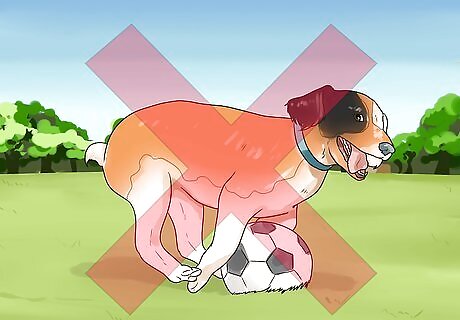
Go for slow walks. Once you get the go-ahead from your vet, take your dog for slow walks. Make sure to keep her on a leash so you can monitor and protect her. Consider allowing your dog to swim or walk on an underwater treadmill to promote healing and give her some activity. Avoid any challenging activities such as hikes or running. Steer clear of the dog park while your pet heals.










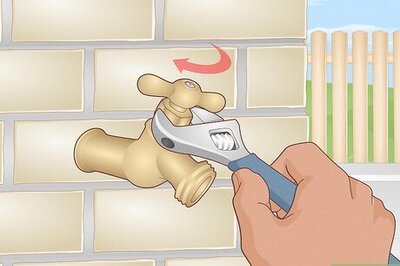





Comments
0 comment